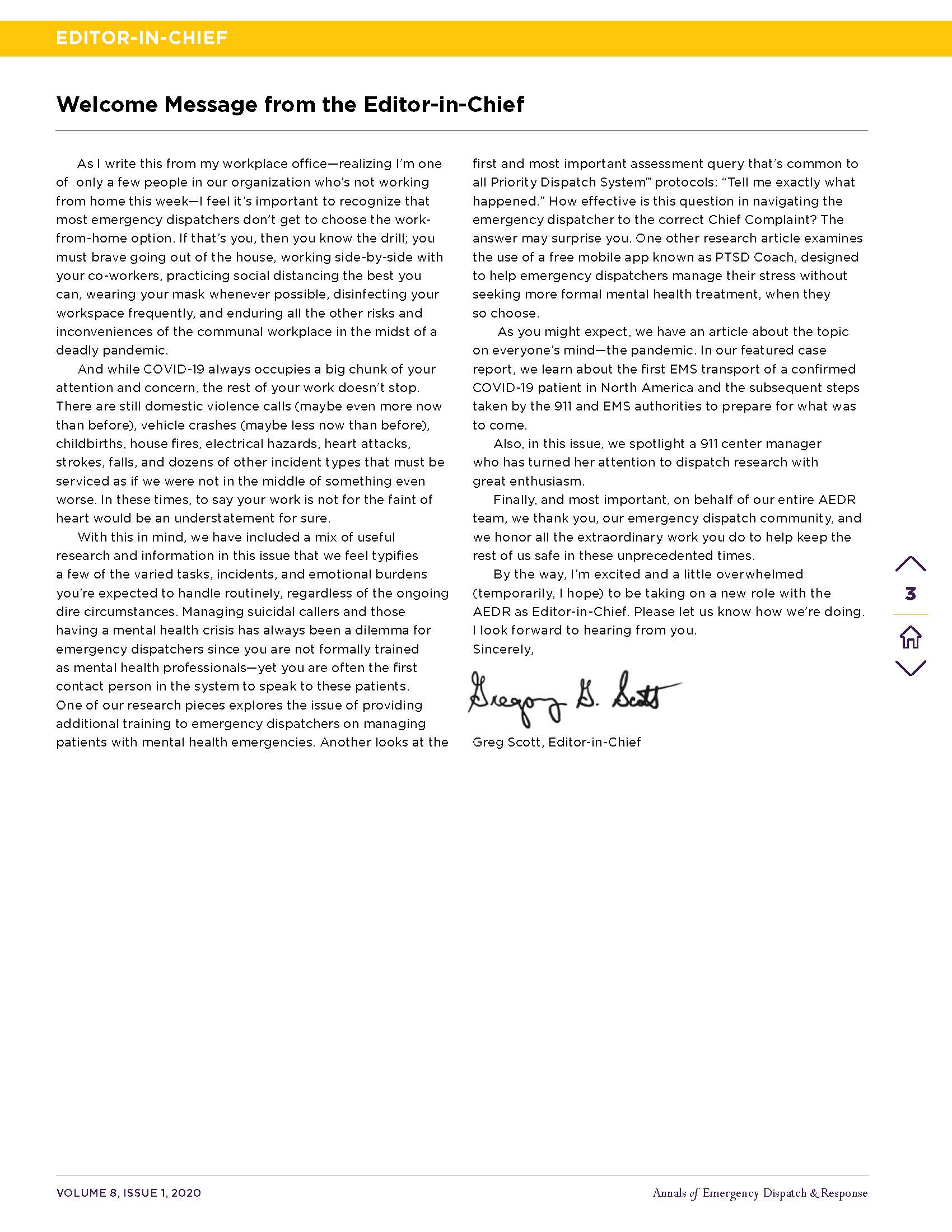
Message from the Editor-In-Chief
As I write this from my workplace office—realizing I'm one of only a few people in our organization who's not working from home this week—I feel it's important to recognize that most emergency dispatchers don't get to choose the work-from-home option. If that's you, then you know the drill; you must brave going out of the house, working side-by-side with your co-workers, practicing social distancing the best you can, wearing your mask whenever possible, disinfecting your workspace frequently, and enduring all the other risks and inconveniences of the communal workplace in the midst of a deadly pandemic.
And while COVID-19 always occupies a big chunk of your attention and concern, the rest of your work doesn't stop. There are still domestic violence calls (maybe even more now than before), vehicle crashes (maybe less now than before), childbirths, house fires, electrical hazards, heart attacks, strokes, falls, and dozens of other incident types that must be serviced as if we were not in the middle of something even worse. In these times, to say your work is not for the faint of heart would be an understatement for sure.
With this in mind, we have included a mix of useful research and information in this issue that we feel typifies a few of the varied tasks, incidents, and emotional burdens you're expected to handle routinely, regardless of the ongoing dire circumstances. Managing suicidal callers and those having a mental health crisis has always been a dilemma for emergency dispatchers since you are not formally trained as mental health professionals—yet you are often the first contact person in the system to speak to these patients.
One of our research pieces explores the issue of providing additional training to emergency dispatchers on managing patients with mental health emergencies. Another looks at thefirst and most important assessment query that's common to all Priority Dispatch System™ protocols: "Tell me exactly what happened." How effective is this question in navigating the emergency dispatcher to the correct Chief Complaint? The answer may surprise you. One other research article examines the use of a free mobile app known as PTSD Coach, designed to help emergency dispatchers manage their stress without seeking more formal mental health treatment, when they so choose.
As you might expect, we have an article about the topic on everyone's mind—the pandemic. In our featured case report, we learn about the first EMS transport of a confirmed COVID-19 patient in North America and the subsequent steps taken by the 911 and EMS authorities to prepare for what was to come.
Also, in this issue, we spotlight a 911 center manager who has turned her attention to dispatch research with great enthusiasm.
Finally, and most important, on behalf of our entire AEDR team, we thank you, our emergency dispatch community, and we honor all the extraordinary work you do to help keep the rest of us safe in these unprecedented times.
By the way, I'm excited and a little overwhelmed (temporarily, I hope) to be taking on a new role with the AEDR as Editor-in-Chief. Please let us know how we're doing. I look forward to hearing from you.
Sincerely,
Greg Scott, Editor-in-Chief
